part one: Michigan is Weird, Weird, Weird
“Every passion borders on the chaotic, but the collector’s passion borders on the chaos of memories.” -Walter Benjamin, “Unpacking My Library”, 1931
“There are a good many roads here,” observed the shaggy man… “Seems to me a person could go ‘most anywhere from this place.” – Frank Baum, The Road to Oz, 1909
In the mid 1980s, Theresa was a precocious teenager and frequent customer at Book Beat. She was a part-time student, speed-reading through Balzac, Victor Hugo, Henry James and Baudelaire. She read the symbolist poets in French, hung out at the goth clubs and was known as Tracy then. She worked as a hostess/greeter in a swanky Italian restaurant, a cataloger at John King’s bookstore and clerk at the main Detroit Library. She mentioned how she once roller-skated down the vast maze of book aisles in the library’s cavernous basement after hours.
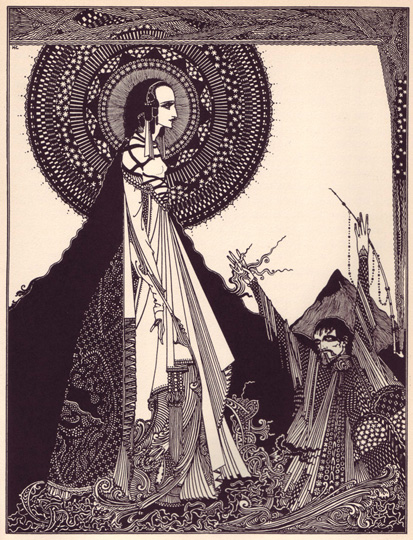 “Did I ever mention that since the age of ten I have been able to quote the whole of “Annabel Lee”? A minor peccadillo, but its mine… I’ve always wanted to have a flaw or vice that was tragic and glamorous like the ether-soaked hankie to the nose.” –T.D., Letter 1990
“Did I ever mention that since the age of ten I have been able to quote the whole of “Annabel Lee”? A minor peccadillo, but its mine… I’ve always wanted to have a flaw or vice that was tragic and glamorous like the ether-soaked hankie to the nose.” –T.D., Letter 1990
[left: illustration by Harry Clarke from Tales of Mystery and Imagination by Edgar Allen Poe, 1923]
Poe’s gloomy ode made lasting connections… as smart-alecky ten-year-olds we memorized the same trancelike poem and shared a streak of fatalism, dream-struck by Poe’s dark eerie crypt, where lost souls drifted eternally among the demonic forces in the world.
The echoing “tomb by the sounding sea” illuminates a hidden truth in the space where events beyond reality take shape. Many believe Annabel Lee was about Poe’s dead wife Virginia, as it expressed his profound grief and anger – and was written just after her passing. The poet lost in despair, was on a nocturnal journey, following the specter of his spiritual love. Poe’s vivid dreamworld worked its way into another reality, casting its shadow across the art and literature of the 19th and 20th century.
Poe is often the first view children have into the psyche of the damaged adult world. Contemplating his dark dreams connects directly to the innocent heart and soul -and the creation of new worlds, where a child dreamer or future storyteller may discover new vistas, alternate journeys in the pages of a book.
It was “to the dreamers and those who put faith in dreams as in the only realities” – that Poe dedicated his grand philosophical work Eureka, a dense prophetic prose poem he considered his greatest work. Poe’s amateur cosmology prophesied the scientific nature and invention of the universe, and its metaphysical influence through Baudelaire and Mallarmé, wove itself throughout French symbolism and surrealism. Theresa was the godchild of French symbolism and cartoon goth America. She placed her faith in dreams and the author’s command of language.
* * *
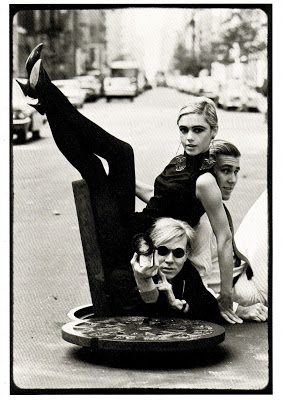 MAD IN FRANCE, MAD IN FRANCE she once hand-stamped on the back of a postcard, “I want to go to the New School in New York and study poetry:
MAD IN FRANCE, MAD IN FRANCE she once hand-stamped on the back of a postcard, “I want to go to the New School in New York and study poetry:
DEMI-MONDAINES (Like Edie) COME IN EVERY SIZE
THEY’RE REALLY MONSTERS IN DISGUISE…
I was doing a window of table settings and the dishes were “Made in France.” I loved the misspelling. (Above) FOU EN LES ETATS-UNIS” – Tracy, 12/09/1989
“literature is that neuter, that composite, that oblique into which every subject escapes, the trap where all identity is lost, beginning with the very identity of the body that writes.” –Roland Barthes, The Death of the Author
Tracy once described a strange event that occurred in Paris, something other-worldly -a reality based hallucination or vision that came to her while standing on the Bridge Mirabeau. She always seemed cautious and skeptical of anything that smacked of the supernatural, eastern mysticism or the occult, but she explained in detail how a wave of love, an emanation or spirit seemed to transport her through time as centuries flashed in front of her eyes while standing frozen on this historic bridge. There she floated in cosmic time, causing a loss of identity and physical self. She searched through the rows of poetry at the bookstore and pulled out Apollinaire’s famous poem:
“Love runs away
Like running water flows
Love flows away
But oh how slow life goes
How violent is hope
Love only knows”
— Apollinaire, Mirabeau Bridge from Alcools
Later inspired by the poem and Tracy’s vision, I recorded a music version in 1994 with the acid-folk group Monster Island: bridge mirabeau – she would also inspire several other songs released on the Ecstatic/Yod album “From the Michigan Floor”.
* * *
 Tracy grew up in Lapeer Michigan, a quiet Midwest Irish-Catholic city surrounded by open spaces, rolling verdant hills and natural beauty. Lapeer lies about an hour north of Detroit and was once a flourishing lumber town founded in 1833.
Tracy grew up in Lapeer Michigan, a quiet Midwest Irish-Catholic city surrounded by open spaces, rolling verdant hills and natural beauty. Lapeer lies about an hour north of Detroit and was once a flourishing lumber town founded in 1833.
[Photo left: Pix theater, Lapeer]
The Duncan family home was situated in lush farmland a couple miles from the center of town. It required long idyllic walks or rocky bicycle rides through dirt roads to reach the nearest neighbor, the corner drugstore or high school, miles away. Lapeer was a countryside foil for daydreams and fantasy -fortunate roots that Theresa would draw from. Many of her fondest moments were spent at the downtown library, where she found books to be another road to freedom and adventures.
The downtown library was renamed the Marguerite de Angeli library in 1981 after Lapeer’s most famous resident, a children’s writer/illustrator born in 1889. de Angeli and the entire town, including the Duncan family was present at the rededication ceremony that coincided with Lapeer’s Sesquicentennial, a huge event in this small town.
de Angeli was awarded the Newbery Medal in 1950 for The Door in the Wall. Her books often focused on common working class people, the forgotten and those overlooked in life. At her Newbery Medal acceptance speech de Angeli said, “It is really true, as we used to tell our children, “When you come to a stone wall, if you look far enough, you will find a door in it.” One of the best doors I know is the help of Librarians. I don’t know what I would do without them.”
As a child Theresa began to read the dictionary front-to-back, over and over, memorizing meanings and spellings – a daily routine encouraged by her maternal Grandmother, a retired artist-teacher she loved dearly and shared a strong magical bond with. From that relationship sprang her love of language. Words are a powerful tool, a celebration of all that was indefinable and mysterious within life. In language she found empowerment and the door to new realities.
* * *
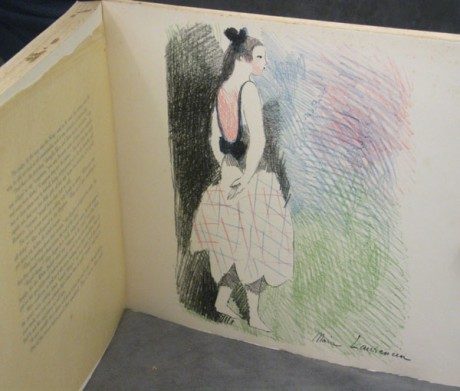 “…what I am really concerned with is giving you some insight into the relationship of a book collector to his possessions, into collecting rather than a collection.” – Walter Benjamin, Unpacking My Library
“…what I am really concerned with is giving you some insight into the relationship of a book collector to his possessions, into collecting rather than a collection.” – Walter Benjamin, Unpacking My Library
[illustrated left: The Black Sun Press version of Alice in Wonderland by Lewis Carroll, illustrated by Marie Laurencin]
We shared our thoughts on reading and I made suggestions for books she’d enjoy. We discussed Stéphane Mallarmé’s poems for his dead son, A Tomb for Anatole, the works of Artaud, Breton’s Nadja, the river poetry of Jim Harrison, the Paris expats, the grim stories of Angela Carter, off-beat young adult fiction and various novels by Stefan Zweig and Pierre Klossowski. She loved the wickedly funny and urbane Zuleika Dobson by Max Beerbhom –his only novel, a satire of a femme fatale who kills off her suitors one by one.
Tracy had a sweet-spot for the gothics; Perfume by Patrick Suskind, and the short illustrated oddities of Edward Gorey. She recognized Kathy Acker’s stolen plotline from Akutagwa’s Hellscreen, ( a story we both loved) and brought it to my attention.
She’d often burst out laughing, suddenly and loudly while reading –a wonderful habit, interrupting the lunchtime crowd at the local diner. In between cigarettes and grilled cheese sandwiches, Tracy would be howling her way through John Fante’s My Dog Stupid and Steven Millhauser’s Edwin Mullhouse, devoured by laughter, as the lunch patrons glumly watched on. There were often calls or visits to the diner to yank her out of her lunchtime reading and return to work.
* * *
Book collector, publisher and eccentric poet Harry Crosby’s diary, Shadows of the Sun, was perhaps the first hardcover first edition she bought. That was followed by Geoffrey Wolff’s superb biography; Black Sun: The Brief Transit and Violent Eclipse of Harry Crosby. This set off a spurt of interest in roaring twenties Paris. Tracy was a disciple of the Sun herself, perfecting and dreaming of the ultimate tan she’d collect one day in California.
In his last notebook entry on December 9, 1929, Crosby wrote, “One is not in love unless one desires to die with one’s beloved.” Crosby once came to Detroit, checking into the Book Cadillac hotel to enact a double suicide pact. A day later on December 10th, Harry and his mistress Josephine would be dead by their own hands. That tragic romanticism was elixir for Theresa.
Duncan interiorized the wild party literati or “Lost Generation” –characterized in Hemingway’s Sun Also Rises, featuring the unstoppable Bret Lady Ashley, “his most enduring siren”, an attractive force of revolutionary female sexuality that exploded on the page. Bret was an uncommon beauty weaving spells of violence and seduction – a life later channeled by Ava Gardner in the film version.
“Thus there is in the life of the collector a dialectical tension between the poles of disorder and order.” -Walter Benjamin, Unpacking My Library
Benjamin’s Unpacking My Library, was an outline of clues and passageways to the mind’s interior. The library as labyrinth and keyboard, as a kind of living playable entity, would absorb Theresa throughout her life. She could never part with a book or be away from her library for long periods and in her spare time, searched out philosophy and antique children’s books. Her library was a source of pride and being away from it for long, invoked anxiety and depression. Her life was dependent on a deep immersion in literature that only another mad bibliophile can imagine.
 Theresa’s own Moveable Feast, was a long 1920s phase that included the biography of Sylvia Beach and her expatriate bookstore Shakespeare and Company, Published in Paris and Women of the Left Bank . She was enthralled with vintage Paris and that led to other works on or about; Kay Bole, Djuna Barnes, Janet Flanner, Nora Joyce, Isadora Duncan, Nancy Cunard, Mina Loy, Lee Miller and Caresse Crosby – a secret lodge of radical women modernists. Actress Louise Brooks was another inspiring rebel –her independent spirit and spark-like intelligence was captured in her autobiography Lulu in Hollywood.
Theresa’s own Moveable Feast, was a long 1920s phase that included the biography of Sylvia Beach and her expatriate bookstore Shakespeare and Company, Published in Paris and Women of the Left Bank . She was enthralled with vintage Paris and that led to other works on or about; Kay Bole, Djuna Barnes, Janet Flanner, Nora Joyce, Isadora Duncan, Nancy Cunard, Mina Loy, Lee Miller and Caresse Crosby – a secret lodge of radical women modernists. Actress Louise Brooks was another inspiring rebel –her independent spirit and spark-like intelligence was captured in her autobiography Lulu in Hollywood.
[photo: Louise Brooks film still, Pandora’s Box, 1929]
Theresa was employed at Book Beat in 1988, when she was nineteen and worked for almost a year. In her application when asked, “What book would you recommend for a boy’s Bar Mitzvah gift,” her answer was, “a subscription to Playboy”… Her art interests ranged from antiquarian illustration to Art Nouveau, surrealism, dada, photographs, the fairytale illustrations of Harry Clarke, Arthur Rackham, J.J. Grandville, Edmund Dulac, Aubery Beardsley and Frank Baum’s Oz series.
“Photography conflates the notions of the “beautiful” and the “interesting.” It’s a way of aestheticizing the whole world.”
-Susan Sontag
Duncan followed the small photo exhibits in our backroom gallery -a time when we showed work by photographers Madame D’Ora, and Baron Adolph de Meyer, art deco spiritualist Frantisik Drtikol, Bernice Abbott, Camerawork pictorialism, James Van Der Zee’s Harlem portraits, Warhol Factory Photos by Billy Name and stills from the silent Hollywood era. When she came back to visit, she’d browse through boxes of old photographs. “When I become rich I’ll buy them all!” she’d say. Photos are surreal, a mystery of distilled traces from the past, that hold their subjects forever beautiful. Each photo can act as container of compacted energy, of memory condensed. Photography seduced Theresa and filled her with wonder, a kind of instant déjà vu knowledge, it was history by osmosis, a romance for the eyes. She loved the flappers, models and bizarrely dressed dancing showgirls from the Ziegfeld follies. Like the Madeline in Proust’s Remembrance of Things Past, photographs held some fleeting essence, transporting as perfume.
* * *
“In the cult remembrance of dead or absent loved ones, the cult value of the image finds its last refuge. In the fleeting expression of the human face the aura beckons from early photography for the last time. This is what gives them their melancholy and incomparable beauty.” –Walter Benjamin, Selected Writing Volume Four, p. 238
[ photo; Frantisek Drtikol’s “Wave or Dark Waves,” 1925]
Theresa soaked up images from art books, postcards and ephemera; gazing on antiques, valentines, scrapbooks, and small bits of advertising – later reconstructing her personal blog as a museum or theater of the mind. Her visual intelligence was born complete years before, but suddenly became public on her website Wit of the Staircase. She presented culture as a looking-glass world, in window boxes that recall artist Joseph Cornell’s romantic reveries, poems created from fragments collaged, the past as a fairytale seen through shadow boxes.
Theresa’s tiny Oak Park bedroom was a half mile from work. She transformed it into a wunderkammer, a miniature museum decorated floor to ceiling with small art cards and magazine clippings; a collection of 19th and 20th century sensibilities, a kaleidoscopic of artists, photos, poets and writers, a wall of dreams, where past and future collided together. It felt like a large version of Cornell box. Her make-up tables and mirrors were plastered with more images, perfume bottles, books and lipstick tubes. Under a window hung prisms throwing rainbow darts around the room.
She once asked what I thought Rimbaud meant by the line “FOR THIS IS THE ASSASSIN’S HOUR” from the poem The Drunken Morning. I didn’t have an answer -but wrote a song describing the memory of her room and the drunken violence of Rimbaud’s poem; the assassin’s hour
Photographer Francesca Woodman’s first monograph was published by Wellesley College in 1986. Theresa read a review I wrote about the book and was attracted to Woodman, a rare photographic prodigy that ended her life in suicide at the age of 22. Woodman’s self-portraits were metaphors of discovery, sexuality, performance, death, ruins and identity – some were striking adaptions from Alice in Wonderland. Woodman created mysterious and surreal inventions -angelic diaphanous imagery inspired by literature that spoke in sympathy to Duncan’s own visual language.
[photo: Francesca Woodman, Untitled, 1975]
* * *
Theresa watched and studied classic noir films. She’d spout off long passages from forgotten B-movies, reciting tough-as-nails Barbara Stanwyck patter. Noir films were a passion and escape –hard-core lessons on American grit and survival. There was comedic genius in these impromptu performances. Noir is about murder, light, shadow, love and revenge, where the leading man is nearly always destroyed by the classic femme fatale woman –irresistible beauties that seduce and destroy the men they encounter. Theresa was the opposite of a femme fatale (although a true scholar of the genre). She understood that noir was also about dark humor, camp, reversing the script and a culture of bad clichés.
In 1989, Warhol superstar Ultra Violet came to Book Beat to sign her autobiography Famous for Fifteen Minutes. Tracy stood by Ultra, chaperoning the visit. Warhol was the king of misfits, and his legacy was at its height. Snippets of video show them both, a couple of old girlfriends chatting away, sharing fashion tips, wearing the identical brand lipstick. “Hey, that’s MY brand you’re wearing! Wait here I’ll show you!” Tracy runs off-screen to get her plastic purse and flaming red gloss… Lipstick was her favorite accessory, worn thick, shiny and deeply scarlet, a costume signature mask with some obscure meaning I always thought was more comedic (a la Lucille Ball) then sexy. She’d loose the gloppy shades in later years, becoming more light and subtle with makeup.
Theresa was model tall and thin with large brown eyes and long arms -she often referred to as “chimpanzee-like.” Her hands smoothly tapered were neat and nun-like. She walked quickly with a hip-hop bounce, a loose irregular up-beat step, slightly off-balance, clownish, on the verge of falling off some invisible highwire. She’d enter a room with loud steps, a combination of grace and klutz. Her laughter came quickly, infectious, slightly masculine and mischievous.
Her style was a conglomerate of damaged fashion and street-punk kitsch; Catholic school-girl outfits, dirty sneakers and farmer overalls, combat boots and hot pants– an assemblage of the soft and hard. She had two coats; a musty second-hand faux leopard-skin fur that reeked of musk perfume and a scrappy black leather bomber jacket “borrowed” from a boyfriend.
“Hi Dear – I just got back from an extended tropical vacation. We stayed in the “Apocalypse Now” bungalow with bamboo walls and floors and mosquito netting over the bed. Now I’m really brown with white hair like a Leni Reifenstahl photo. “Charlie doesn’t get much R&R, a bowl of rat meat, a plate of cold rice.” – Theresa 2/28/1997
Perfume, Crime & musical deafness
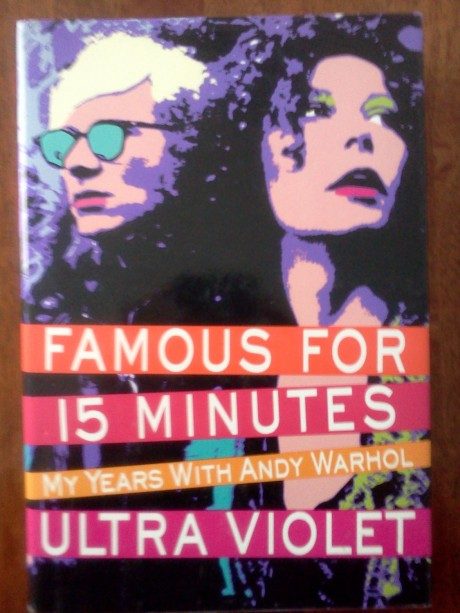 In his autobiography, The Philosophy of Andy Warhol, ( From A to B and Back Again), Warhol said, “…another way to take up more space is with perfume… Of the five senses, smell has the closest thing to the full power of the past. Smell really is transporting. Seeing, hearing, touching, tasting are just not as powerful as smelling if you want your whole being to go back for a second to something. Usually I don’t want to, but by having smells stopped up in bottles, I can be in control and can only smell the smells I want to, when I want to, to get the memories I’m in the mood to have. Just for a second. The good thing about a smell-memory is that the feeling of being transported stops the instant you stop smelling, so there are no aftereffects. It’s a neat way to reminisce. ”
In his autobiography, The Philosophy of Andy Warhol, ( From A to B and Back Again), Warhol said, “…another way to take up more space is with perfume… Of the five senses, smell has the closest thing to the full power of the past. Smell really is transporting. Seeing, hearing, touching, tasting are just not as powerful as smelling if you want your whole being to go back for a second to something. Usually I don’t want to, but by having smells stopped up in bottles, I can be in control and can only smell the smells I want to, when I want to, to get the memories I’m in the mood to have. Just for a second. The good thing about a smell-memory is that the feeling of being transported stops the instant you stop smelling, so there are no aftereffects. It’s a neat way to reminisce. ”
Theresa’s perfume interest may’ve came from reading Warhol -as one of the great archivists, he collected rare perfumes and experimented with olfactory memory. Particular aromas are strong reminders of the past -an ability called the Proust phenomenon. Perfume and its ability to raise memory connect Duncan to Warhol’s biographical approach to the world. They both had a serious interest in fame, glamour and the artificial mechanisms tied to film, photographic stills, archiving and glossy magazines. Warhol manager Billy Name exhibited his Warhol factory photos and film stills at Book Beat around the time of Tracy’s employment. We silver-foiled the ceiling together and blasted VU at the opening.
“The French perfumers,” he says, intently. “There were people of great class among them, but the industry basically was just a bunch of
kids from Grasse, which means typical Côte d’Azur, which means a bunch of criminals. I was talking to a perfumer raised in Grasse once, she said, ‘Either you became a perfumer or you stole motorcycles’.” –TD June /22/2005
Perfume is an ephemeral art like music or film – abstract, formless, emotional and molecular -difficult to describe. Anna McCoy a respected artisan perfumer and perfume blogger called Duncan’s perfume reviews, “incredibly deep, sometimes twisted, always brilliant and to be respected, even if you did not agree with her.” Duncan’s attraction to perfumes was as intellectual as it was sensual. Thinking and writing on Perfume was a way to connect with her poetic nature, to fuse with a metaphysical “vaporous reality.”
“Hello from the banks of the Mississippi. I went to Oxford and saw Rowan Oak, Faulkner’s house. We snuck into the grounds after midnight. It was very dark with bright moonlight and millions of stars. I kissed on his grave and drank bourbon.” – Theresa, postcard, October 17, 1994
* * *
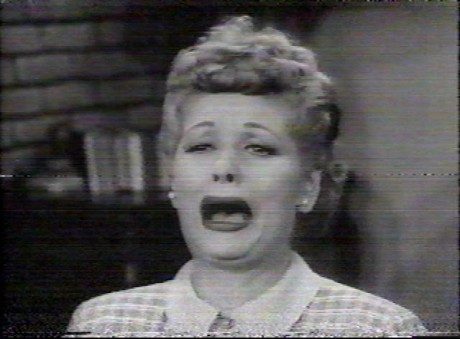 Theresa’s zany humor reminded me of Lucille Ball, the dizzy redhead queen of comedy and a successful (on her own terms) star who was beautiful, mercurial and hilarious. Lucy created her slapstick style using exaggerated larger-then-life silent era gestures. Tracy too was a prankster and part-time goofball – not always on time or dependable, but always fun to be around.
Theresa’s zany humor reminded me of Lucille Ball, the dizzy redhead queen of comedy and a successful (on her own terms) star who was beautiful, mercurial and hilarious. Lucy created her slapstick style using exaggerated larger-then-life silent era gestures. Tracy too was a prankster and part-time goofball – not always on time or dependable, but always fun to be around.
Her last day at work was worthy of a Lucy episode. After a night of too much party, she went into the backroom office and vomited on my desk. That was her final scene at the bookstore.
She was sent home and later I hand delivered her last check. “I’m sorry,” I said, “I don’t think its working out…” It was comedic but at the same time she couldn’t stop crying. In a few days she called to thank me and said she needed to move on, perhaps to Ann Arbor and finish school. Later she’d always say, “I wear my pink slips proudly like a badge of honor!”
La De Da Da Dum: Where’s My Fucking CD?
I am singing along with the new music you sent me…
I am flying back to New York until mid-March on Monday and I will listen to it on the plane through headphones. It’s so sunny and warm here in LA I’m not looking forward to freezing my ass off in the nine feet of snow that just fell over NYC. How’s my little dog going to walk through that shit? She’s only six inches high. – TD, 2/21/2003
We usually agreed on art, movies and books but rarely music. It was like a dropped circuit. Each holiday since the late 1980s we’d trade mix tapes or CDs – a holiday tradition that began at Book Beat to share favorite soundtracks we’d play in the store during the past year. Theresa would respond with Steely Dan tracks (her all-time favorite), Morrissey, Bruce Springsteen, the Kinks, Nirvana and White Stripes, the indie alterna-rock hit parade. Her musical taste was flat, MOR, mainstream. She didn’t think about music too much. It just drifted over her life from Jeremy and other contacts, with rarely much thought put into it, which came as a surprise. I’ve since grown to accept and even appreciate some of her choices, but mostly she favored a kind of dullish mediocre pop music –but why settle for that when there’s so much creativity and richness out there?
 Theresa knew I was a Dylan fan and once called me up after discovering Bob’s born-again phase (ugh) –“whaddya think?” she’d ask, “do you know anything about it? I can’t stop listening to this.” She particularly liked Dylan’s Where Are You Tonight? And wanted help decoding the lyrics:
Theresa knew I was a Dylan fan and once called me up after discovering Bob’s born-again phase (ugh) –“whaddya think?” she’d ask, “do you know anything about it? I can’t stop listening to this.” She particularly liked Dylan’s Where Are You Tonight? And wanted help decoding the lyrics:
The truth was obscure,
too profound and too pure,
to live it you have to explode.
In that last hour of need, we entirely agreed,
sacrifice was the code of the road.
–Bob Dylan, Where Are You Tonight?
“I used to hate these albums, but Jeremy has loved them since he was a little boy. I think there is something Gnostic, very odd, very beautiful about the writing now. I think Bob Dylan’s Christianity is the equal opposite of Beck’s recent rather dark religious conversion”. – TD 9/05/2004
The White Stripes were Theresa’s heroes –chic pop-blues performers, garage-rockers of the moment, and almost every mix would have one or two of their songs on it. They represented the best of her generation – and there was sweetness and loyalty in that devotion to her hometown favorites. Popular music may’ve been her way to really connect and understand mainstream trends. Her all time fave band was Steely Dan (named after a strap-on dildo in the beat classic Naked Lunch) -a 70s light, pseudo jazz-rock band that put out seven overly produced studio albums, cranking out pop-hits like Hey Nineteen, Do It Again, Reelin’ in the Years and Rikki Don’t Lose That Number. The band resembled the Muppets with interchangeable members, making radio pop-schmaltz with cryptic stoner lyrics in the manner of the Eagles, crooning about “Hotel California… oh, what a lovely place.” Sometimes I think she may’ve been slightly tone deaf, joking or just lazy about listening habits – music was a sore spot. Rarely were her sound mixes tolerable for long, except the last CD she sent around mid-October in 2006, and Steely Dan was not on it.
Her last mix arrived around Halloween, close to her birthday and she asked for feedback: “I wanted to test it out on you early,” she said. I always thought she was bulk mailing them to friends for the holidays but that wasn’t the case. This was a sad coded mix, filled with songs of lost love, gloom and despair, and I dug it. The selection conveyed a sudden maturity and a sadness that echoed through that holiday season, tainted by greed, blood, and that wasteful Iraqi war. Medieval standards by Sufjan Stevens were mixed with southern blues and that great Fall song; HEY! Luciani (based on a play Mark Smith wrote on the mysterious death of Pope John Paul I in 1978). Then came a beautiful acoustic-folk rendition of the Yeah,Yeah,Yeah’s “Our Time”:
I may be dead honey
But I was left with my eyes
And underneath sugar
Well I’ve been sunk by your lies
And my heart baby
Is cold and blue
We’re two of a kind lately
Both me and you
– excerpt from Yeah Yeah Yeahs, Our Time
Other depressing songs sank in: Guided By Voices Mushroom Art – “Living without you is difficult, but our dead dreams await…”. A growing emptiness builds up: ”close my eyes and shut the door, I can’t seem to get up off the floor, nothing really matters any more…” (Its Different, Face on the Floor) -all full of sarcasm, ennui and irony, foils for the holiday I thought, good stuff. I lifted several tracks and was impressed by the mix and told her so, but then I didn’t stop to think about it much, until soon after her death. It began to feel like a code for something else going on, a cry for help or escape -and the last song was Big Star’s melancholic “Nightime.”
“please don’t say a word, get me out of here, get me out of here. I hate it here… dancing in your eyes and fell through the skies…”

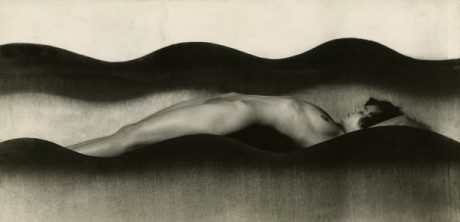
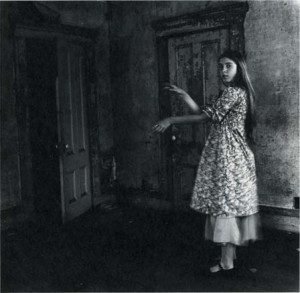
Thanks, Cary. An incredible gift.
You’re welcome – thank you for reading.
Cary-
A moving tribute to a beautiful friendship. Tracy would love it!
Mary, I hope it gives some comfort to you and your family to know she was appreciated and loved… I’m not sure how she’d feel, since she kept so many things private but feel lucky to have known her. Thank you for the support -and your website too -a wonderful tribute and resource for her writings.
Thank-you. This is really beautiful and inspiring. I met Theresa in Los Angeles years ago and, as your writing conveys, she was unforgettable, a force of nature (and culture). Such a poignant coincidence that you were also close to Mike, another irreplaceable loss — one that we are all still grappling with. My best wishes to you.
Lisa – I think Theresa and Mike may’ve met before, but remember introducing her and Jeremy to Mike at the opening of his show at Metro Pictures – and later at the Whitney Biennial opening which had a DAM display and Jeremy’s Winchester house film.. it was a mad scene. We were all supposed to meet up at an old bar around the corner, one of Theresa’s favorite hangouts but never made it. Thanks for your kind thoughts.
Cary, this is the Theresa that I knew and loved. Thank you for putting this together.
Hi Wilber – thank you for your comment and for your amazing footage of Theresa – that film rules!! -chokes me up every time, beautiful and haunting, like seeing the outtakes of a great actress.. (even though its kinda hard to get through Enya these days..) I’d love to hear the story of your making that anytime.. peace.
Sarah -you might want to check out; Donald Fagen Defends Steely Dan to his Friends. Even though its from “The Onion”, there’s a ring of truth to it. Thank you for your comments.
Wow, this is great. Thank you so much for posting! However, I have to say I always enjoyed her posts on music and agreed with many of her favorite artists–and I can be a bit of a music snob, myself! Steely Dan is truly a divisive band among music lovers and Theresa really helped me see the light on them and many other things. If you ever find one of her old mixes, I’d love to know what she put on it. Again, thanks so much for sharing these lovely memories.